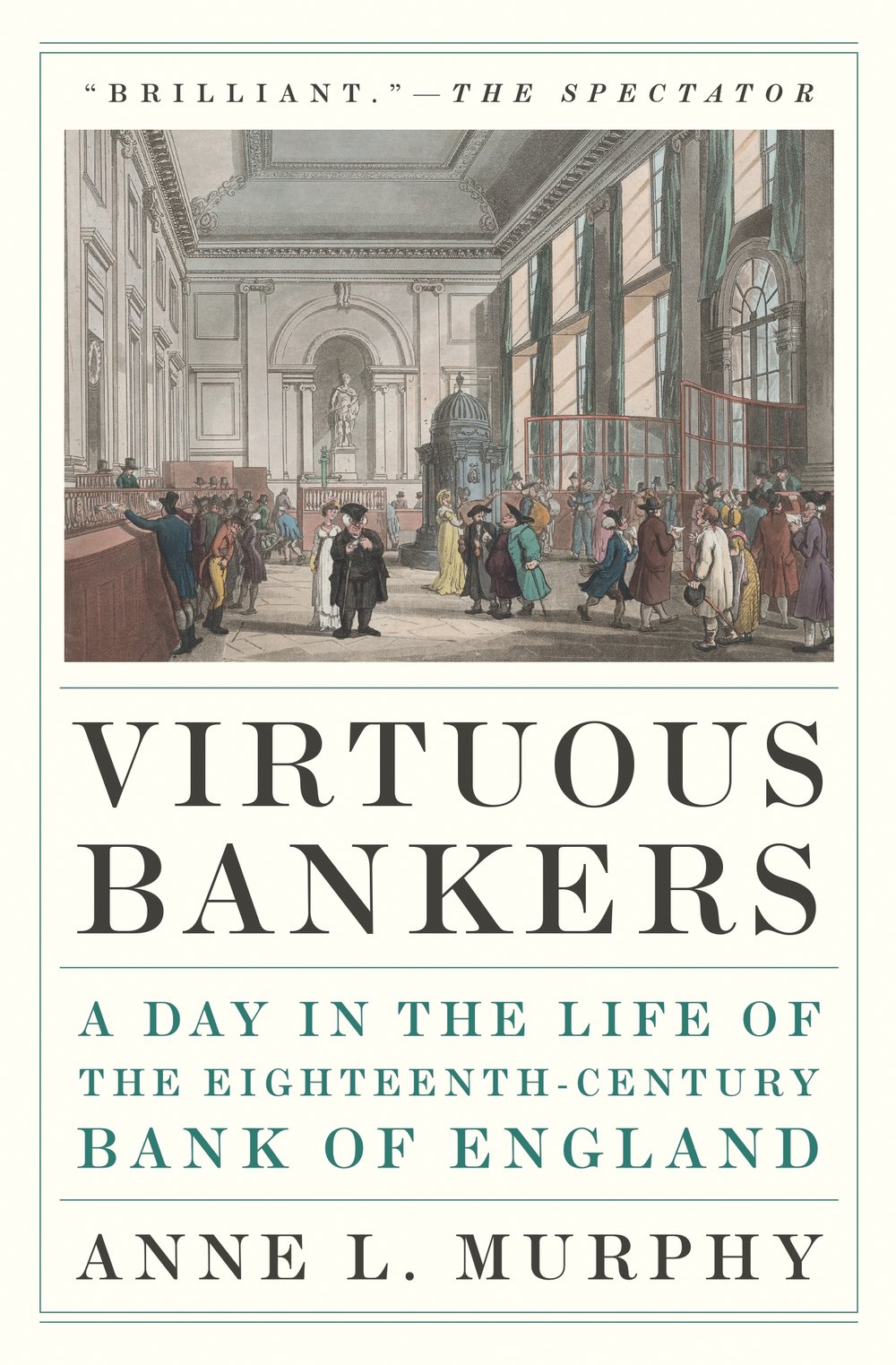Virtuous Bankers
A Day in the Life of the Eighteenth-Century Bank of England

The eighteenth-century Bank of England was an institution that operated for the benefit of its shareholders – and yet came to be considered, as Adam Smith described it, 'a great engine of state'. In Virtuous Bankers, Anne Murphy explores how this private organisation became the guardian of the public credit upon which Britain’s economic and geopolitical power was based. Drawing on the voluminous and detailed minute books of a Committee of Inspection that examined the Bank’s workings in 1783-84, Murphy frames her account as 'a day in the life' of the Bank of England, looking at a day’s worth of banking activities that ranged from the issuing of bank notes to the management of public funds.
Murphy discusses the bank as a domestic environment, a working environment, and a space to be protected against theft, fire, and revolt. She offers new insights into the skills of the Bank’s clerks and the ways in which their work was organised, and she positions the Bank as part of the physical and cultural landscape of the City: an aggressive property developer, a vulnerable institution seeking to secure its buildings, and an enterprise necessarily accessible to the public. She considers the aesthetics of its headquarters – one of London’s finest buildings – and the messages of creditworthiness embedded in that architecture and in the very visible actions of the Bank’s clerks. Murphy’s uniquely intimate account shows how the eighteenth-century Bank was able to deliver a set of services that were essential to the state and commanded the confidence of the public.
'This is a model of economic history, acute, profound and diverting.' – Ferdinand Mount, London Review of Books
'[Virtuous Bankers] is compelling and lively, and will please both academic and general readers... Murphy’s thorough research sets a high standard for future work in this field.' – Perry Gauci, Literary Review
'Brilliant.' – Jesse Norman, The Spectator
'Fascinating... [Murphy] makes the technicalities of financial history accessible and personal.' – Martin Daunton, BBC History Magazine
'Murphy turns what could have been a dry bureaucratic history into a fascinating and engaging read. Above all, her book highlights the value of approaching the big questions in economic history with a sensitivity to the routines and rhythms of everyday life.' – James Taylor, History Today
'The modus operandi of the Bank of England is described assiduously in [this] delightful new book.' – Grant's Interest Rate Observer
'[Murphy] excels in putting this microhistory in the larger context of the bank's relationship with the British state and British economic history... By situating the Bank of England in the contexts of London and Britain at large, Murphy paints it a lively, much-needed, and three-dimensional portrait that uncovers the unknown corners of this well-known bank.' – Zhihui Zou, World History Encyclopedia
'Well-researched... Murphy’s history is unique.' – Kofi Adjepong-Boateng, Financial Time

Anne L. Murphy is professor of history and executive dean of the Faculty of Humanities and Social Sciences at the University of Portsmouth. Before joining academia, she worked for twelve years in the City of London trading interest rate and foreign exchange derivatives. She is the author of The Origins of the English Financial Markets.
